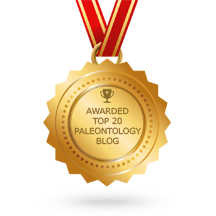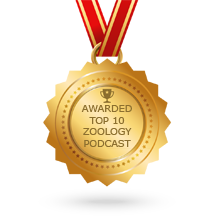Browsing the "Mesozoic" Category
The Mesozoic era, meaning “middle life”, is a division of earth’s history spanning from around 252 to 66 million years ago. It is subdivided into the Triassic, Jurassic and Cretaceous periods. The beginning of the Mesozoic is characterised by a long phase of recovery following the end Permian mass extinction. The end of the Mesozoic is marked by the Cretaceous/Paleogene extinction event which wiped out the dinosaurs among other groups.

Published on July 7th, 2017 | by Guest Blogger
Implications for Dinosaur Nesting Behaviour and Thermophysiology Oviraptorosaurs had received a pretty bad reputation when they first popped onto the scene. Initially, palaeontologists branded these creatures as “egg plunderers”, due to the discovery of an individual, [&hellip... Read More →

Published on June 30th, 2017 | by Liz Martin-Silverstone
When thinking of palaeontology in Asia, most people think of Mongolia and China, but there is actually a significant palaeontology community in Japan. Japan has many fossils, starting in the Ordovician, and ranging from everything from [&hellip... Read More →

Published on June 26th, 2017 | by Guest Blogger
With advancements in computed tomography (CT) scanning comes an increased understanding of the internal structures preserved in extant and extinct animals, providing a non-destructive way of peering into the bones and revealing their secrets. Along with [&hellip... Read More →

Published on June 18th, 2017 | by Guest Blogger
Articles on dinosaur neurovasculature are like buses: you wait for most of the Phanerozoic for one to arrive and then two appear at once. Indeed, 2017 saw the publication of two articles relating to the purpose [&hellip... Read More →

Published on June 17th, 2017 | by David Marshall
A new species of Cyclotosaur, a giant salamander-like amphibian, has been described from the Late Triassic rocks of East Greenland. Cyclotosaurs are temnospondyl amphibians, known from other Late Triassic deposits in Germany, Poland and Svalbard, but [&hellip... Read More →

Published on May 2nd, 2017 | by David Marshall
Palaeontology is a constantly evolving field; when new methods and techniques are invented, they allow us to revisit old fossils and test our previous observations and hypotheses. Recently, an exciting new method called ‘Laser-Simulated Fluorescence’ (LSF) has [&hellip... Read More →

Published on April 12th, 2017 | by Liz Martin-Silverstone
We have a pretty good idea about how different dinosaur groups evolved, and how they are related (although anyone who has been following the recent dinosaur relationship shake-up knows this is not quite as clear as [&hellip... Read More →

Published on January 18th, 2017 | by David Marshall
Las Hoyas is a Early Cretaceous lagerstätte (site of special preservation) located close to the city of Cuenca, Spain. In this episode, we welcome Ángela Delgado Buscalioni and Francisco José Poyato-Ariza, both from the Universidad Autónoma [&hellip... Read More →

Published on December 8th, 2016 | by David Marshall
Researchers from China, Canada, and the University of Bristol have discovered a dinosaur tail complete with its feathers trapped in a piece of amber. The finding reported today in Current Biology helps to fill in details [&hellip... Read More →

Published on October 1st, 2016 | by Liz Martin-Silverstone
The last 10 years has shown a large increase in the number of new species and new discoveries of dinosaurs, as well as the number of papers written. It seems that almost every week there is a [&hellip... Read More →























